Tourism in Bhutan

Tourism in Bhutan began in 1974, when the Government of Bhutan, in an effort to raise revenue and to promote the country's unique culture and traditions to the outside world, opened its isolated country to foreigners. In 1974, 287 tourists visited Bhutan. Since then the number of tourists visiting Bhutan has increased to 2,850 in 1992, rising dramatically to 7,158 in 1999.[1] By the late 1980s tourism contributed over US$2 million in annual revenue.
Despite being open to foreigners, the government is acutely aware of the environmental impact tourists can have on Bhutan's unique and virtually unspoiled landscape and culture. Therefore, they have restricted the level of tourist activity from the start, preferring higher quality tourism. Until 1991, the Bhutan Tourism Corporation (BTC), a quasi-autonomous and self-financing body, implemented the government's tourism policy.[1] The Bhutanese government, however, privatised the Corporation in October 1991, facilitating private sector investment and activity. As a result, today over 75 licensed tourist companies operate in the country.[1] All tourists (group or individual) must travel on a planned, prepaid, guided package tour or custom designed travel program. Most foreigners cannot travel independently in the kingdom. The arrangements must be made through an officially approved tour operator, either directly or through an overseas agent.
The most important centres for tourism are in Bhutan's capital Thimphu, and in the western city of Paro, near India. Taktshang, a cliff side monastery (Called the "Tiger's Nest" in English) overlooking the Paro Valley, is one of the country's attractions. This temple is incredibly sacred to Buddhists. Housed inside the temple is a cave in which the Buddhist Deity who brought Buddhism to Bhutan, Meditated for 90 days as he battled the demons that inhabited this valley, in order to spread Buddhism. The temple has been standing for well over a thousand years, yet has suffered two fires in which the damage has been repaired. Druk Air used to be the only airline operating flights in Bhutan, however now it is serviced by Bhutan Airlines as well.[2]
Visas to Bhutan are obtained through its embassy or consulate in one's home country.
Countries with huge potential visitors are the Philippines, Australia, Japan, Thailand, Germany, Taiwan, and Canada.
Arrivals by country
Most visitors arriving to Bhutan on a short term basis were from the following countries of nationality:[3][4][5] In 2017, the country saw its highest tourist arrival yet at more than 250,000 people. The growth was boosted by the Asia-Pacific market, notably from India, Thailand, Vietnam, Philippines, Australia, Japan, China, Singapore, Bangladesh, Malaysia, Maldives, and South Korea. Western markets also increased, notably from the United States, United Kingdom, Germany, and France. Majority of 'tourists' that came from China were also classified as 'Tibetan refugees'.[6]
| Rank | Country | 2013 | 2015 | 2016 |
|---|---|---|---|---|
| 1 | 11,550 | 25,380 | 56,210 | |
| 2 | 7,997 | 12,100 | 15,202 | |
| 3 | 4,000 | 7,000 | 10,000 | |
| 4 | 4,000 | 7,399 | 7,298 | |
| 5 | 6,997 | 7,137 | 7,292 | |
| 6 | 4,035 | 2,437 | 4,833 | |
| 7 | 3,527 | 3,778 | 4,177 | |
| 8 | 2,309 | 2,958 | 3,124 | |
| 9 | 2,051 | 2,587 | 3,015 | |
| 10 | 2,770 | 2,498 | 2,297 | |
| 11 | 2,054 | 1,546 | 1,967 | |
| 12 | 2,062 | 1,833 | 1,818 | |
| 13 | 1,572 | 1,563 | 1,501 |
UNESCO Tentative List of Bhutan
In 2012, Bhutan formally listed its tentative sites to the UNESCO World Heritage Centre. It was the first time Bhutan listed its sites to the organization for future inclusion. Eights sites were listed, located in various properties throughout the country.[7]
| Site | Image | Location | Proposed criteria | Year Listed as Tentative Site | Description | Refs |
|---|---|---|---|---|---|---|
| Ancient Ruin of Drukgyel Dzong | 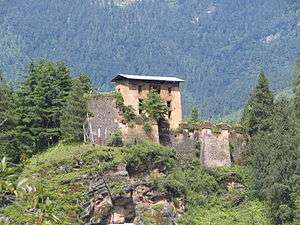 |
Paro District | Cultural | 2012 | The site includes the ruins of a fortress-Buddhist monastery built by Tenzin Drukdra in 1649. In 2016, the Bhutanese government announced that the monastery will be rebuilt to its former glory.[8] | [9] |
| Dzongs: the centre of temporal and religious authorities (Punakha Dzong, Wangdue Phodrang Dzong, Paro Dzong, Trongsa Dzong and Dagana Dzong) | 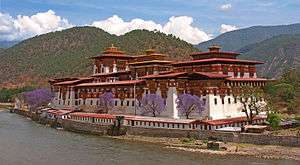 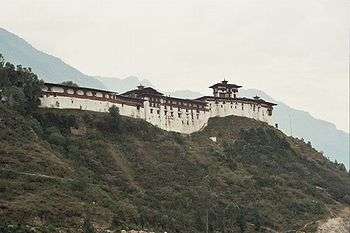 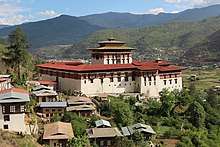 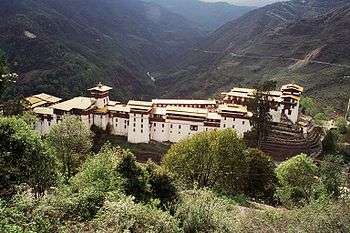 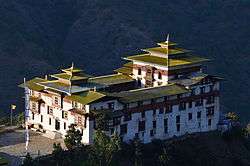 |
Multiple | Cultural | 2012 | The site includes five dzongs significant to Bhutanese history, namely, Punakha Dzong, Wangdue Phodrang Dzong, Paro Dzong, Trongsa Dzong and Dagana Dzong. | [10] |
| Sacred Sites associated with Phajo Drugom Zhigpo and his descendants | 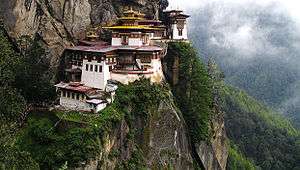 |
Multiple | Cultural | 2012 | The site includes Tsedong Phug, Gawa Phug, Langthang Phug, Sengye Phug, Gom Drak, Thukje Drak, Tsechu Drak, Dechen Drak, Taktsang Sengye Samdrub Dzong, Tago Choying Dzong, Lingzhi Jagoe Dzong and Yangtse Thubo Dzong. | [11] |
| Tamzhing Monastery | 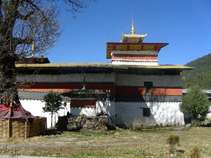 |
Bumthang District | Cultural | 2012 | The site is the most important Nyingma gompa in Bhutan. | [12] |
| Royal Manas National Park (RMNP) | 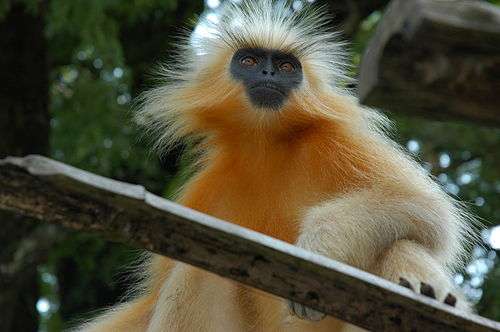 |
Multiple districts | Natural | 2012 | The site is the oldest national park in Bhutan. | [13] |
| Jigme Dorji National Park (JDNP) | Multiple districts | Natural | 2012 | The site is the second largest national park in Bhutan. | [14] | |
| Bumdeling Wildlife Sanctuary | 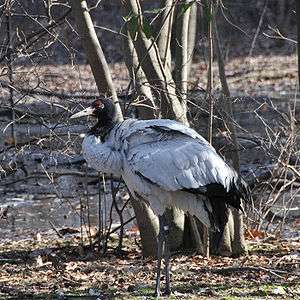 |
Trashiyangtse District | Cultural | 2012 | The site is an important bird area in the Himalayas. | [15] |
| Sakteng Wildlife Sanctuary (SWS) | .jpg) |
Multiple districts | Cultural | 2012 | The site was established to protect a mythical race known as migoi, as well as the wildlife within the site. | [16] |
See also
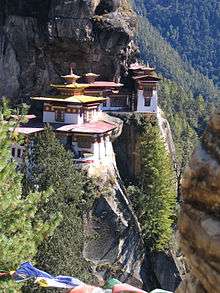
References
- 1 2 3 Dorji, Tandi. "Sustainability of Tourism in Bhutan" (PDF). Digital Himalaya. Retrieved August 10, 2008.
- ↑ Ionides, Nicholas (9 April 2008). "Bhutan's Druk Air looks to expand". Airline Business. Retrieved 2008-08-10.
- ↑
- ↑
- ↑
- ↑ http://www.bbs.bt/news/?p=93784
- ↑ https://whc.unesco.org/en/statesparties/bt/
- ↑ http://www.kuenselonline.com/drukyuls-victory-rises-to-the-gyalsey/
- ↑ https://whc.unesco.org/en/tentativelists/5694/
- ↑ https://whc.unesco.org/en/tentativelists/5695/
- ↑ https://whc.unesco.org/en/tentativelists/5696/
- ↑ https://whc.unesco.org/en/tentativelists/5697/
- ↑ https://whc.unesco.org/en/tentativelists/5698/
- ↑ https://whc.unesco.org/en/tentativelists/5699/
- ↑ https://whc.unesco.org/en/tentativelists/5700/
- ↑ https://whc.unesco.org/en/tentativelists/5701/
External links

- Tourism Council of Bhutan (Official Website)
- Panoramic Journeys
